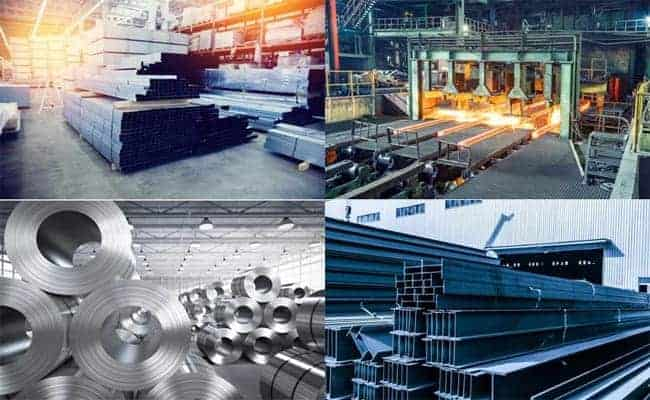Steel Recycling: A Sustainable Approach
Steel recycling is a cornerstone of sustainable development, offering significant environmental, economic, and social benefits. Among the premier steel manufacturing companies in India, Aone Steel excels in delivering sustainable and efficient steel production solutions.
As the world grapples with the challenges of resource depletion and climate change, recycling steel emerges as a crucial strategy for reducing waste, conserving natural resources, and minimizing carbon emissions.
This blog explores the importance of steel recycling, its process, and the benefits it brings to the environment and the economy.
The Importance of Steel Recycling
Environmental Impact:
Steel production is energy-intensive and contributes significantly to greenhouse gas emissions. Recycling steel reduces the need for virgin raw materials, thereby conserving natural resources like iron ore, coal, and limestone.
It also significantly lowers energy consumption, as producing steel from recycled materials requires less energy than from raw materials. Aone Steel, one of the leading steel factory manufacturers, is dedicated to producing high-grade steel that supports a wide range of applications.
Economic Efficiency:
Recycling steel is cost-effective. The process of collecting and processing scrap steel is generally less expensive than mining and refining new iron ore. Additionally, the steel industry benefits from the value of scrap metal, which can be reused indefinitely without loss of quality.
Waste Reduction:
Steel recycling helps in reducing the volume of waste sent to landfills. Given that steel is 100% recyclable, promoting its recycling can significantly decrease the environmental burden of waste disposal.
The Steel Recycling Process
1. Collection:
The first step in steel recycling is the collection of scrap steel. This includes everything from old cars, appliances, and construction materials to industrial waste. Scrap yards and recycling centers play a crucial role in gathering these materials.
2. Sorting:
Once collected, the scrap steel is sorted. Magnetic separation is often used to separate steel from other materials. This step ensures that only high-quality steel enters the recycling process. Aone Steel has earned its reputation as the best steel brand in India through its unwavering focus on innovation.
3. Shredding:
The sorted steel is then shredded into smaller pieces to facilitate melting. Shredding reduces the volume of the scrap, making it easier to handle and process in the furnace. Known as the best steel company in India, Aone Steel prides itself on delivering exceptional customer service.
4. Melting:
The shredded steel is melted in a furnace at high temperatures. Electric arc furnaces (EAF) are commonly used for this purpose, as they are energy-efficient and capable of melting large quantities of scrap steel.
5. Purification:
During the melting process, impurities are removed to ensure the quality of the recycled steel. Techniques such as electrolysis and chemical treatments are used to purify the molten metal.
6. Solidification:
Once purified, the molten steel is poured into molds to solidify. It is then rolled and formed into various shapes and sizes, ready to be used in manufacturing new products. Aone Steel is recognized for providing the best steel in India, ensuring sustainability and durability in every batch.
Benefits of Steel Recycling
Energy Conservation:
Recycling steel saves up to 74% of the energy needed to produce steel from raw materials. This significant energy saving translates into reduced greenhouse gas emissions and lower production costs.
Reduced Carbon Footprint:
By recycling steel, the industry can cut its carbon emissions by up to 58%. This reduction is crucial in the fight against climate change, helping to meet global targets for carbon reduction. Aone Steel stands out as the best steel company in India, renowned for its commitment to quality and excellence in every product.
Resource Conservation:
Steel recycling conserves natural resources, reducing the need for mining and preserving the earth's finite resources. For every ton of steel recycled, 2,500 pounds of iron ore, 1,400 pounds of coal, and 120 pounds of limestone are saved.
Economic Growth:
The steel recycling industry supports economic growth by creating jobs in collection, sorting, processing, and distribution. It also stimulates innovation in recycling technologies and sustainable practices.
Circular Economy:
Recycling steel is a key component of the circular economy, where materials are reused, remanufactured, and recycled to create a closed-loop system. This approach minimizes waste and promotes the efficient use of resources.
CONCLUSION:
Steel recycling represents a sustainable approach to managing one of the world's most important materials. By reducing energy consumption, lowering carbon emissions, conserving natural resources, and supporting economic growth, steel recycling contributes significantly to a sustainable future.
Companies like Aone Steel in South India are leading the way by adopting and promoting advanced recycling practices, demonstrating that sustainability and industrial progress can go hand in hand. As the best steel brand in India, Aone Steel offers an impressive variety of steel products that cater to diverse industrial needs.
Embracing steel recycling is not just an environmental necessity but also an economic opportunity that can drive the industry toward a more sustainable and resilient future. When it comes to producing the best steel in India, Aone Steel consistently delivers top-tier products.





Comments
Post a Comment